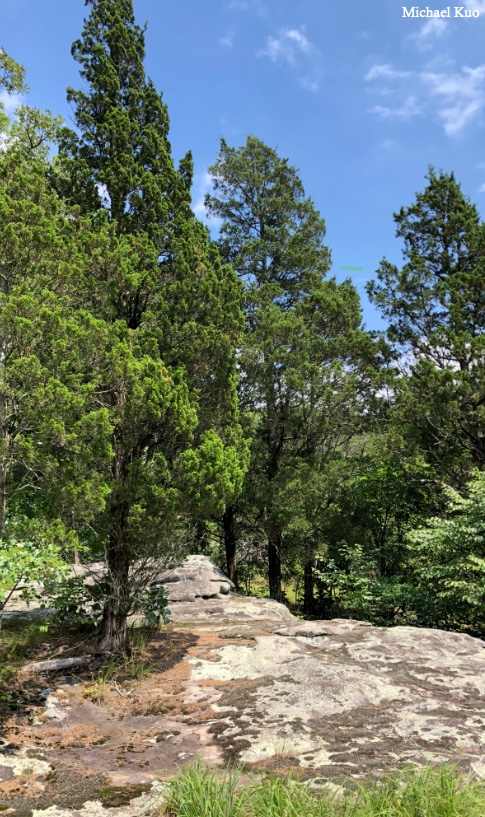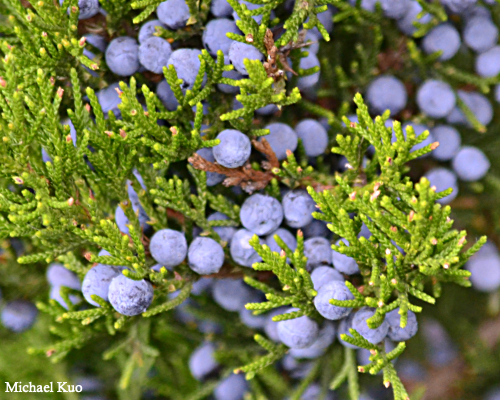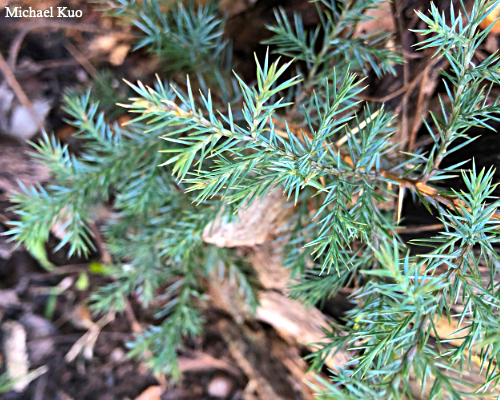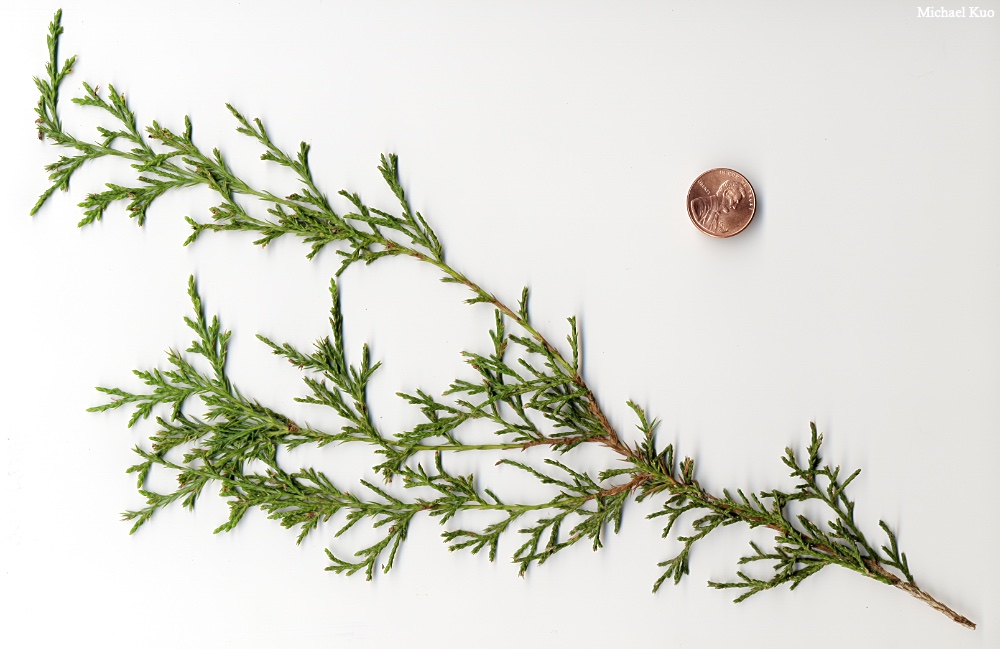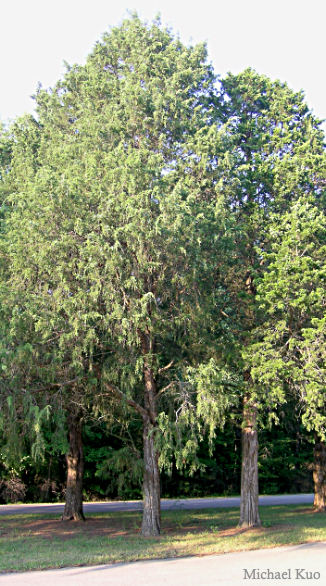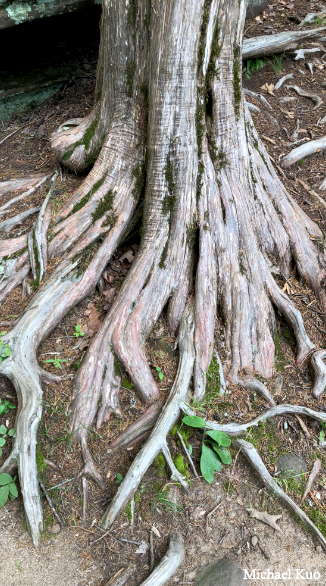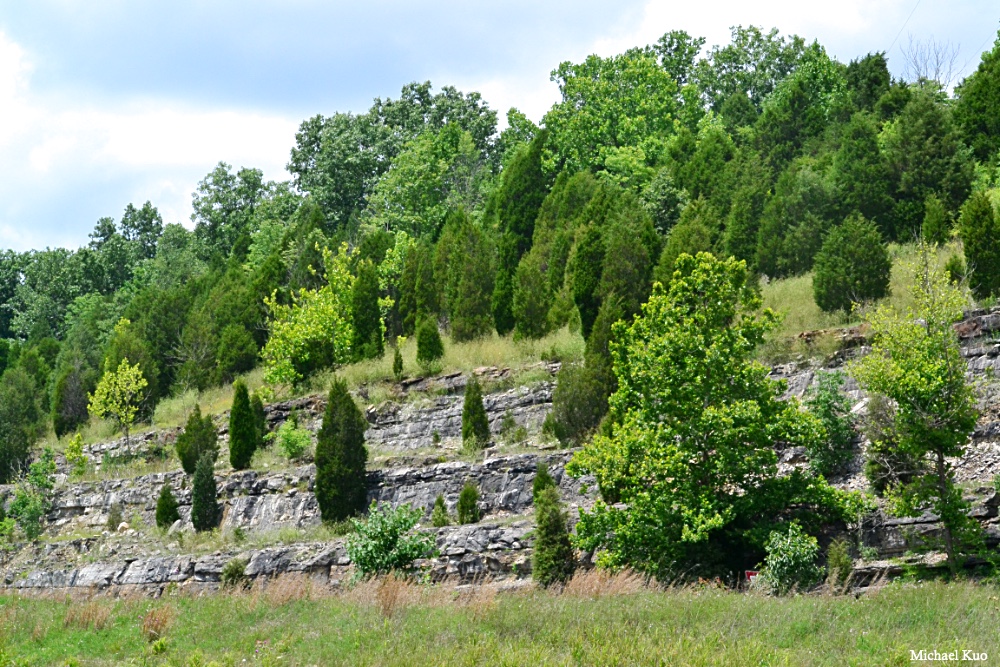 Juniperus virginiana (eastern redcedar) |
 immature fruits |
|
This year in fifth-grade science, our son learned about pioneer species—organisms that move in after ecological disturbance to take hold and help to prepare the way for later species in the long cycle that is ecological succession. One of our favorite Midwestern pioneers is eastern redcedar, Juniperus virginiana. There is nowhere it will not take up residence if given a chance. It pops up in virtually any untended, old field or rocky slope in the Midwest. But some of the most amazing redcedars occur in Kentucky and in the lower portions of Missouri, Illinois, and Indiana, where limestone hills have been blasted to make room for interstates and highways; on these sheer rock faces redcedars take root in seemingly impossible places and, safe from ditch mowing in these lofty positions, develop into mature trees. Eastern redcedar is recognized by its foliage, which progresses from spiky to soft and scale-like as it develops; its grayish bark, which separates into long vertical strips; and the fact that it produces "berries"—small fruits that progress from pale green to whitish to bluish. In the northern stretches of eastern redcedar's range it might be confused with northern white cedar (Thuja occidentalis), but the latter tree tends to occur in coastal areas, has scale-like foliage that is not initially sharp and prickly, and does not produce the berries. To see what happens when aliens with orange tentacles attack eastern redcedar, check out Gymnosporangium juniperi-virginianae, better known as cedar-apple rust! |
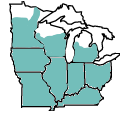 midwestern range |
|
|
|
|
|
|
|
|
|
|
|
|
References: Peattie 1948, GN Jones 1971, Miller & Jacques 1978, Kricher & Morrison 1988, Preston 1989, RL Jones 2005, Mohlenbrock 2006, Kershaw 2007, Sibley 2009, Voss & Reznicek 2012, Mohlenbrock 2014, Hilty 2018, USDA 2018. Kuo, Michael & Melissa Kuo (November, 2018). Juniperus virginiana (eastern redcedar). Retrieved from the midwestnaturalist.com website: www.midwestnaturalist.com/juniperus_virginiana.html All text and images © , midwestnaturalist.com. |
